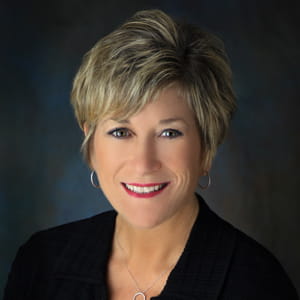5 challenges senior living facilities must navigate

The U.S. is on the cusp of a transformative surge in its senior population as baby boomers, the generation born between 1946 and 1964, reach their golden years. By 2050, 20% of the American population will be aged 65 or older.
As they age, many of these seniors will require assisted living support, leading to an uptick in demand for senior living facilities. But determining precisely when and where this demand will occur — and how to prepare for it — takes careful business planning.
Here are five challenges senior living facilities must navigate to get ready for the upcoming wave of service demands.
1. Knowing when to grow
For senior care facilities and other entities that work with the aging population, planning requires both intuition and strategic planning. Expanding too early means losing money from low occupancy rates. Expanding too late could cause a facility to fall behind its competition.
To find the right middle ground, senior living facilities should track both internal and external trends. Decisions about when, where and how large to grow should be informed by clear data and intentional strategic planning.
2. Retaining care providers and administrative staff
Nearly every sector is scrambling for employees, and senior care facilities are no different. Given the deep competition for skilled employees, it’s essential to bring your “A game” to staff recruitment, training and retention.
Providing ample benefits, staff-friendly schedules and competitive pay can help you keep nurses and staff feeling supported and valued. Look for ways to leverage technological solutions — think automated billing reports or AI-driven staff scheduling — to streamline the day-to-day jobs of administrative staff and improve their overall job satisfaction.
Investments in automation and operational improvements will help your business grow effectively and give staff more time to focus on delivering quality care to patients.
3. Upholding a positive reputation
Putting a loved one in a senior care facility is often a difficult choice for families. This decision becomes even more complex if your facility’s reputation becomes sullied by scandals or lawsuits. If you hope to earn families’ trust and long-term business, a positive reputation is essential.
Your facility’s reputation also affects your ability to get paid. Increasingly, private insurance payors, Medicare, Medicaid and other regulatory bodies are pushing for models that tie reimbursement to quality metrics.
Senior facilities must consistently revisit their operational policies and protocols and closely evaluate patient and family feedback and resident health outcomes to ensure patients are receiving the best care possible.
4. Keeping data secure
Elder care facilities maintain the medical and billing records of large sets of seniors — often without the sizeable cybersecurity budgets of a larger hospital network. This makes you a prime target for hackers.
In 2022 alone, there were more than 700 cyberattacks on healthcare facilities affecting 500 patient records or more. To combat this risk, facilities must allocate adequate staff and resources to protecting patients’ sensitive health data and financial information, along with your business’s own confidential financial records.
Taking steps to evaluate your facility’s HIPAA security risk assessment and incident response capacity — as well as other key digital strategies — can help you stay ahead of hackers and shut down data breaches quickly, if they occur.
5. Taking control of finances
Decreasing reimbursement rates, increasing competition and rising wages have made it difficult for facilities to plan and predict their financial growth. Such predictions are even harder when there’s no sound accounting system driving them.
Take the time to review your current accounting and revenue reporting strategies to determine if they’re accurately capturing the data you need. If they’re not, it may be time to invest in new software systems or new administrative protocols to inform your long-term business decisions.
By leveraging analytics and forecasting in your “big-picture” financials and master planning strategies, you can put your facility on a path toward stable and lasting growth.
How Wipfli can help
At Wipfli, our healthcare professionals understand all the pressures placed on your leadership team. Our services for senior living providers can help you embrace new payment structures, leverage insights from real-time analytics, set strategic goals for growth and more. Contact us today to learn more.
Sign up to receive additional healthcare content and information in your inbox, or continue reading on:




